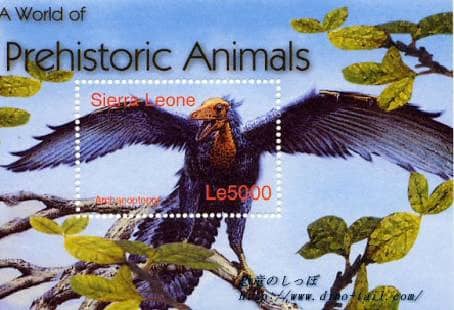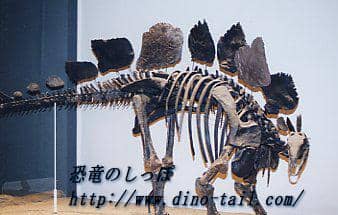Small Dinosaur Eaten by Mammal Discovered
2005-01-28
Fossils of two species of mammals have been discovered in the Early Cretaceous strata of Liaoning Province, China. In the stomach of a fossil of Repenomamus robustus (estimated total length: about 60 cm), the bones and teeth of a young Psittacosaurus, an early ceratopsian, were found.
This is a discovery that shows "a carnivorous mammal ate a small dinosaur."
The other mammal species was a new discovery. It is over 1 meter long.
Its teeth also have carnivorous features, and it is pointed out that "due to its size, it may have been a threat to small dinosaurs."
Jurassic Feathered Dinosaur Fossil Discovered in Northern China
2005-02-28
A fossil of a feathered dinosaur has been discovered in the Middle to Late Jurassic strata (about 180 million to 145 million years ago) of the Inner Mongolia Autonomous Region in northern China.
What makes this discovery valuable is that it was found in
Jurassic strata
.
Until now, all feathered dinosaurs discovered in China were from Cretaceous strata.
This is the first time a feathered dinosaur older than Archaeopteryx, considered the oldest bird, has been found.

The discovered fossils are of the instep and toe parts of the leg, but they had feathers about 5 cm long.
The discovered dinosaur is close to birds and is highly likely to be an ancestor of Archaeopteryx.
This is an important discovery that suggests "the possibility that dinosaurs evolved into birds in Asia."
Succeeded in Extracting Dinosaur Blood Vessel Tissue
2005-03-25
A research team from North Carolina State University and other institutions in the United States has succeeded in
extracting [blood vessel tissue] that was not completely petrified from a 70-million-year-old Tyrannosaurus fossil
discovered in a sandstone layer in Montana.
The blood vessels spread in a network and were soft when moistened.
This is the first time that elastic dinosaur tissue has been found.
The tissue was collected from the femur and is said to resemble the blood vessels of a modern ostrich.
However, in 2009, there was also suspicion that "this soft tissue might be altered bacterial slime."
Oviraptor Relative Laid Two Eggs at a Time
2005-05-28
A fossil of a pelvic region just before egg-laying has been found in the Late Cretaceous strata of southern China.
Two eggs were lined up, and the fossil is believed to be from a relative of Oviraptor.
Only two eggs were found, and it is thought that they were "of about the same maturity," making it highly likely that the species "laid two eggs at the same time."
New Theory on the Role of Stegosaurus's Back Plates
2005-05-30

Stegosaurus is famous for the large plates on its back.
The prevailing theory about the
role of these plates is "thermoregulation."
An international research team from the University of California and other institutions has proposed a new theory, stating that
"
as a result of investigating the structure of the plates, they were not useful for thermoregulation or defense, and their only role was for species recognition.
"
